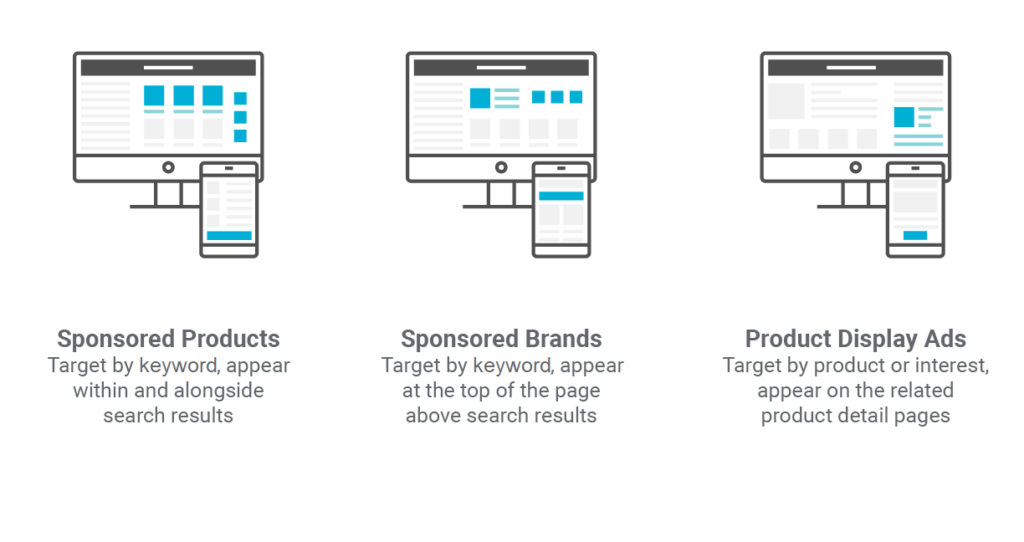
![]() Insights
Insights
Programmatic Account Manager
PPC
With competition in the SERPs getting increasingly fiercer, more brands are beginning to include marketplace advertising in their paid media strategy.
There are multiple marketplace platforms that allow brands to run sponsored adverts; in this guide, we will focus on best practice for running Amazon Advertising campaigns.
If you’re not sure whether Amazon Advertising is suitable for your business needs, this blog runs through the pros and cons of running sponsored ads on the platform.
Advertising your products on Amazon offers some unique benefits. Over half of consumers begin their product search on Amazon, so placing sponsored ads here is a great way to target users with a high purchase intent.
Advertising on Amazon is also an effective tactic for new vendors to compete with well-established sellers. The more sales and positive feedback a product gets, the higher it ranks organically too, so brands often find that they can spend less on Amazon Advertising in the long run once they have taken some of the market share.

Keyword research for Amazon Advertising is very manual, as Amazon keeps its share search volume numbers secret – even the premium search term reports available through Amazon Retail Analytics (ARA) only show the indexed list of searches, but not the volume.
Methods we find useful for gathering keyword insights include:
There are three types of campaigns you can run on Amazon Advertising: Sponsored Products, Sponsored Brands, and Product Display Ads.
Amazon recommends a ratio of: Sponsored Products (70%), Sponsored Brands (20%), Product Display Ads (10%).
It is worth using these as a starting point to see how each campaign type performs and adjusting from there. Depending on the client and niche, we put as much as 80% on Sponsored Products, and as little as 0% on Product Display Ads.

Choosing to run an Amazon Sponsored Products campaign means you are able to run adverts for individual products, which target keywords. These display ads appear within and alongside organic search results. There are four types of targeting:
Auto campaigns can help to identify opportunities for high-conversion keywords that may not have been apparent from your own research. This is a useful way of finding new opportunities and bolstering the number of keywords in your campaigns.
There are three types of keyword match types that Amazon lets you bid on for Sponsored Products:
With Sponsored Brand campaigns, you can promote multiple products at the same time. The ad appears as a banner at the top of the page, above the organic listings, and can contain up to three items that are relevant to the user’s search query.
When it comes to targeting Sponsored Brand campaigns you can target the same categories as Sponsored Products.
You have the choice of where you want to send the traffic:
You can include a benefit of the products in the ad headline, as well as choose whether consumers who click through on the ad land directly on your Amazon store, or on a customised product landing page.
Best practice tips for Sponsored Brands:
Unlike Sponsored Products which appears on the product listings returned for a keyword, Product Display Ads can appear on multiple pages (product detail page, customer review pages, product listing page) and target both products and interests:
When targeting products, it is best practice to place ads against competitors where you know your product can match it point for point, or ideally beat it. This may be because your product has a unique selling point, better customer reviews, or simply costs less.
When targeting by interest, going for niche/ specific categories increases the likelihood that you will get in front of relevant consumers who are in the market to buy your product; targeting broad interests can raise brand awareness but are less likely to convert.
While Amazon will give recommendations on how much they think you should bid, based on the average winning bid range for that particular type of product, it is also possible to calculate the ‘ideal’ bid for each product if you have the following data:
Bid price = product value x conversion rate x target ACoS
For example, if we have a product value of £100, target ACoS of 20% and an average conversion rate of 2%, the bid price would be:
Bid Price = £100 x 0.02 x 0.2 = £0.40
Earlier this year, Amazon Advertising launched several new bidding features for Sponsored Products, including fixed and dynamic bidding options.
If you choose to run your campaign using fixed bids, you will need to manually select the bid price for your adverts; Amazon will use only this CPC when bidding on a keyword.
Alternatively, you can choose one of Amazon’s dynamic bidding strategies. These are automated bidding options that use machine learning to optimise bids:
Amazon will adjust bids as much as 100% for ads which appear above search listings, and up to 50% for all other ad placements.
Interested in learning more about Amazon Advertising? Get in touch with our team and find out how we can help.

![]() Insights
Insights

![]() Insights
Insights

![]() Insights
Insights